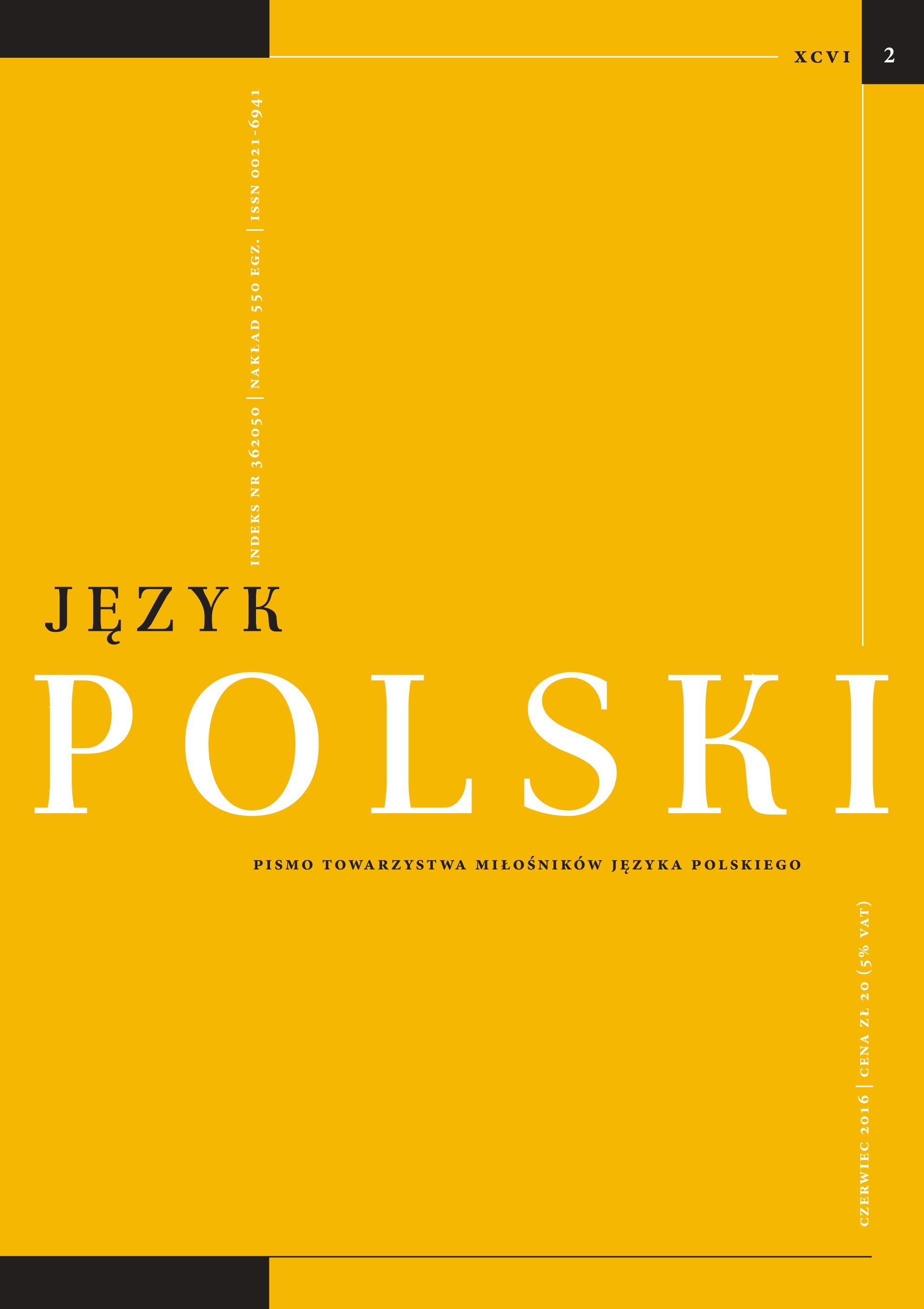Nowe zastosowania form czasownikowych 1. i 2. os. lp. rodzaju nijakiego czasu przeszłego we współczesnych tekstach
New uses of the first and second person singular past tense verb forms in the neuter gender in contemporary texts
Author(s): Bożena ŻmigrodzkaSubject(s): Language and Literature Studies, Theoretical Linguistics
Published by: Towarzystwo Miłośników Języka Polskiego
Keywords: contemporary Polish; grammatical gender vs. sex; verbal inflection
Summary/Abstract: The article describes very rare neuter gender verb forms in the first and second person singular past tense (like "byłom", "byłoś"), the use of which was traditionally constrained to anthropomorphism of objects, whose names were in the neuter grammatical gender. In the contemporary literary texts and internet utterances these forms surface as ways of addressing people – the sender and the recipient in the act of communication. New functions are connected to expressing untypicality, non-normativeness, difficulty of categorizing saidpeople – on the basis of their gender, but also community, ideology and personal affiliations. They can also signal states of temporary confusion. They are used to refer to an unborn child before its sex can be identified or suggest “childlikeness” of an adult person. Forms discussed in the article can also serve as an element introducing multidimensional narration. In literature, they refer to postgender and genderless persons, as well as virtual characters.
Journal: Język Polski
- Issue Year: 2016
- Issue No: 2
- Page Range: 51-72
- Page Count: 22
- Language: Polish

